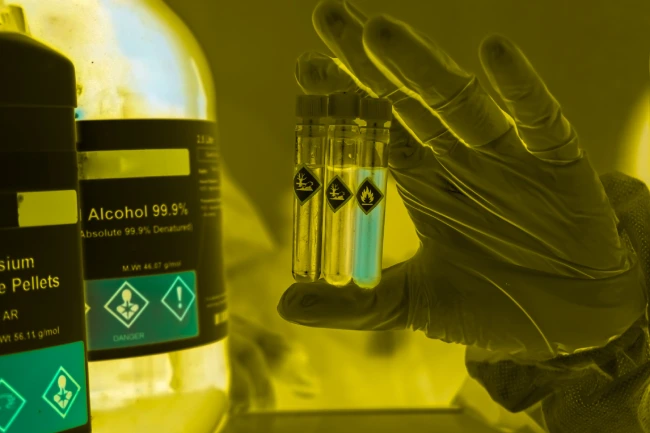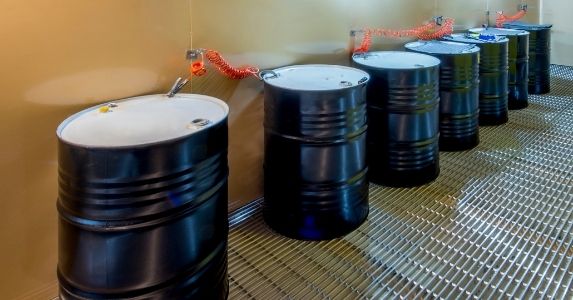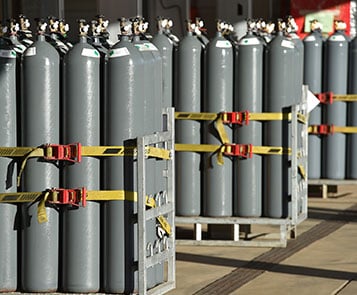8 Key Components of Hazardous Materials SOPs
Any time new hazardous materials are introduced into a facility’s workflow, key types of information must be outlined in order for these chemicals to be handled and used safely. Some of the most important information lies within hazardous materials standard operating procedures (SOPs).
SOPs are important documents that provide concise, easily understood information about hazardous materials. These documents contribute to workplace safety by enabling employees and managers alike to understand the risks of using hazardous materials. Failure to create, maintain, and train workers on these hazardous materials SOPs can result in fines of up to $2,500 per day—and these charges can quickly escalate.
Additionally, hazardous materials SOPs outline pre-approved emergency response techniques to facilitate safe and efficient handling of chemical emergencies. SOPs can also support workplace quality assurance/quality control (QA/QC)—ensuring your team adheres to best practices throughout your operations.
SOPs are crucial—but their effectiveness relies on the information they contain and how they fit within each facility’s specific operations.
Hazardous Materials SOPs and Compliance
The Occupational Safety and Health Administration (OSHA) mandates that each facility has a chemical hygiene plan (CHP) in place, an employer-written program outlining protections for those employees working with hazardous materials. OSHA also requires that employers maintain updated SOPs within their CHP and provides clarity regarding the health and safety hazards that workers are exposed to when dealing with hazardous materials.
Accurate, thorough, and up-to date hazardous materials SOPs are vital elements within a CHP. Lack of hazardous materials SOPs within your CHP can mean fines—but organizations also face penalties if staffers stray from these SOPs and an accident occurs. Inaccurate, illegible, or outdated SOPs may put employees and the community in harm’s way.
Poorly prepared hazardous materials SOPs can contribute to procedural errors and may cause a chemical accident. This could mean bodily harm to your employees as well as down time, reputational damage, fines, and loss of market share.
Financial Cost of Substandard Hazardous Materials SOPs
Failure to maintain proper hazardous materials paperwork not only introduces workplace risks—it exposes organizations to financial threats.
To illustrate this point, let's imagine a facility with an inefficient CHP. SOPs are missing key information, including signs of exposure to hazardous materials, lists of necessary personal protective equipment (PPE), and proper procedural steps in case of a chemical event. As a result of poor documentation, workers are poorly trained in hazardous materials handling and identification of released hazardous chemicals.
Workers don't know what PPE to wear while using hazardous materials and are ill-trained in their use, so a chemical spill quickly occurs. Emergency response steps are not outlined, so the toxic chemical is disposed of improperly and hastily without elevation to management. When the event is finally reported, missing information in the SOPs makes it impossible to quickly and efficiently identify the chemical and its associated risks—so employees don't relate the health issues they begin to have with the chemical event and cannot obtain proper treatment.
When the issue is finally uncovered, all of these CHP, SOP, and training failures are identified—and fines are accrued for each one. All in all, this company could end up facing hundreds of thousands of dollars in penalties.
Clearly, SOPs are crucial for compliance as well as employee safety. The risks—and penalties—for inefficient or incomplete SOPs are high.
Creating Hazardous Materials SOPs
Given these risks, managers should dedicate the time to creating and maintaining thorough and up-to-date SOPs within their facility. It may be tempting to cut and paste a chemical’s safety data sheet (SDS) into a blank document and call it an SOP. This is not the best or most efficient way to create an SOP, however—if this cobbled together document is too long and complicated, staff will be less likely to read it before using the hazardous material, increasing the possibility of a chemical accident.
Managers should instead base SOPs on laboratory-specific safety information and safety information from the chemical manufacturer. While all SOPs have the same general goal, the information included within these documents results in two distinct categories of document:
- Provides chemical safety information
- Outlines a specific laboratory procedure that involves hazardous materials or equipment, such as a process involving chromatography or autoclave machinery
It should be clear within each SOP which of the two types it is and how exactly it is intended to be used.
What to Include in a Hazardous Materials SOP
Overall, an SOP should be concise, easily understood, and a platform for QA/QC for hazardous materials management and use at a facility. Here, we will explore eight must-have categories that should be included in an effective SOP:
- Chemical Overview: This section should include technical chemical information. Indicate identification information such as the chemical name, common synonyms, and Chemical Abstracts Service (CAS) number. To be thorough, follow the industry best practice and include information about the chemical’s potential hazards when in use. Include chemical flammability, reactivity to metals, particular hazards, etc. Detail potential exposure routes, symptoms if exposed, and any other useful information.
- Personal Protective Equipment (PPE) selection: This portion must specify the levels of PPE and PPE types needed to handle the chemicals within the SOP for the entire body, including the face, hands, feet, and hands. If gloves are required, include the type and replacement schedule. When dealing with flammable chemicals, the SOP must state the need for flame-resistant lab coats.
- Hazard Controls: This section outlines any hazard controls in place within the lab that can and should be used to mitigate relevant chemical hazards. Hazard controls could include such information as the location of emergency equipment and work practices requirements, including how to read and understand a work log in order to control the amount of time spent working with a chemical or the presence and use of a perchloric acid fume hood.
- Storage and Handling Requirements: This portion should outline hazardous materials usage parameters and storage requirements. It should indicate where in the lab the hazardous material should be used, such as in a chemical fume hood or on a benchtop. It also should contain instructions in how hazardous materials should be stored—such as in an explosion-proof refrigerator or away from oxidizers.
- Laboratory Procedure: This section should be a step-by-step protocol of the procedures that include hazardous materials, with photos or diagrams of the proper workplace setup—including the proper usage amounts of the chemical.
- Waste Disposal: This portion should offer a description of the hazardous material and its procedural waste disposal strategy. This includes appropriate container specifications, any requirements for separating waste streams, appropriate storage strategies, instructions for filling out the waste label, and pickup procedures.
- Spill and Injury Response: This section should provide step-by-step guides outlining how to deal with an incidental or emergency chemical spill. It should also incorporate instructions for injury avoidance and mitigation strategies, including proper spill kit use and the sequence of response events and notifications.
- Documentation of Training: The SOP should document all who have reviewed it, been trained on it, and understand its information.
These tips will help ensure any SOPs within your facility are thorough, helping you remain compliant and avoid fines and worker injury. Not sure where to start? Triumvirate Environmental can help. We have the know-how and tools to ensure your chemical hygiene plan is efficient, practical, and thorough. Contact us today.






